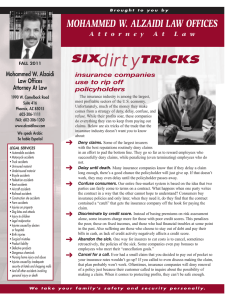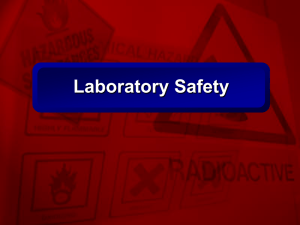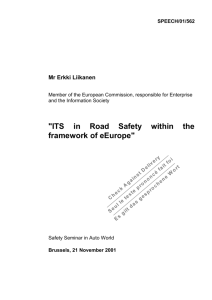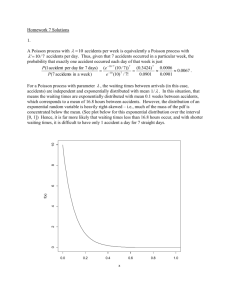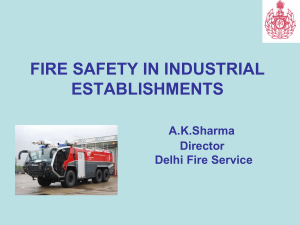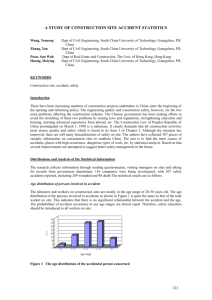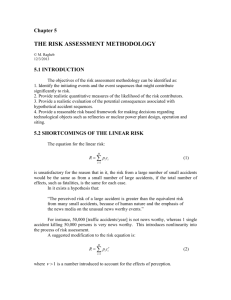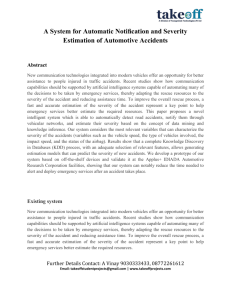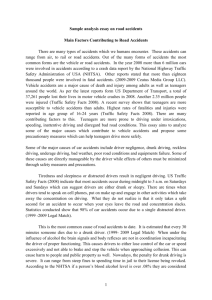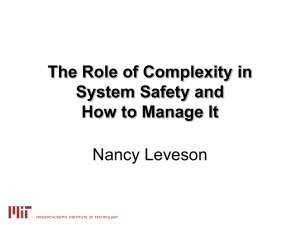Road Safety - Pri
advertisement
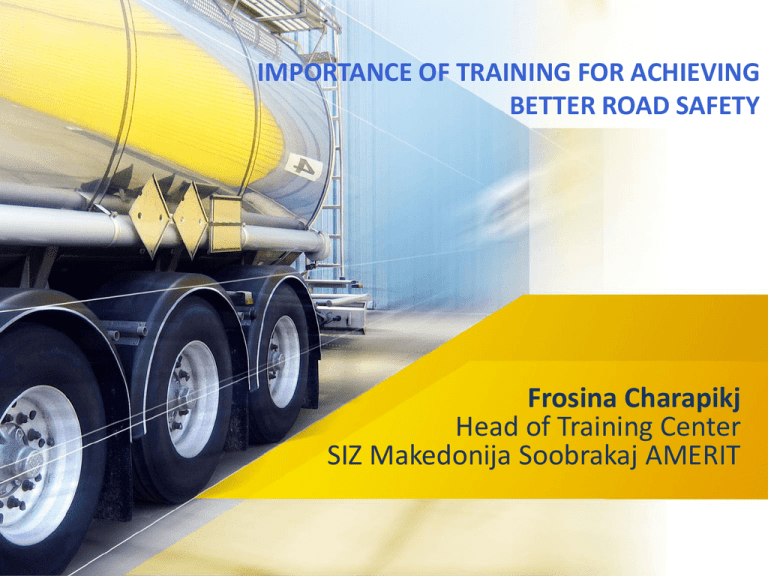
IMPORTANCE OF TRAINING FOR ACHIEVING BETTER ROAD SAFETY Frosina Charapikj Head of Training Center SIZ Makedonija Soobrakaj AMERIT Road Transport Road transport is part of the lifeblood of the European economy and single market. It delivers goods across Europe fast, efficiently, flexibly and cheaply. Road transport is a vital economic sector in its own right, employing about 5 million people across the EU and generating close to 2% of its GDP. Road transport is a tool for reviving growth through the enhancement of competitiveness and the creation of jobs. EU Objectives and Policy The EU 2011 White Paper on transport defines them: • ensure mobility on ever more congested road networks, • significantly further reduce road fatalities, • lower CO2 and other emissions of pollutants from road transport to preserve the environment and lessen the impact of climate change on future generations, • decrease fossil fuel use to improve the Europe’s fuel security. UN Decade of Action for Road Safety 2011-2020 On 11 May 2011, the first ever Decade of Action for Road Safety 2011–2020 was launched with great enthusiasm and optimism across the world, mandated by the United Nations General Assembly, with the goal: saving 5 million lives by 2020. UN Decade of Action for Road Safety 2011-2020 • About 1.24 million people die each year on the world's roads and between 20 and 50 million sustain non-fatal injuries. Young adults aged between 15 and 44 years account for 59% of global road traffic deaths. • This fact file presents data from the Global status report on road safety 2013. This is the second broad assessment of the road safety situation and provides the baseline for the Decade of Action for Road Safety 2011–2020. WHO FACTS ON GLOBAL ROAD SAFETY • Every year, there are 1.24 million road traffic deaths worldwide (young adults aged between 15 and 44 years account for 59% of global road traffic death) • 92% of road traffic deaths occur in low- and middle-income countries • Vulnerable road users account for half of all road traffic deaths globally (pedestrians, cyclists, and riders of motorized two-wheelers and their passengers) • Controlling speed reduces road traffic injuries. A 5% cut in average speed can reduce the number of fatal crashes by as much as 30%. • Drinking alcohol and driving increases the risk of a crash • Wearing a good-quality helmet can reduce the risk of death from a road crash by 40% • Wearing a seat-belt reduces the risk of death among front-seat passengers by 40–65% -Road Safety – Main Cause for accidents: The Human Factor Investigation of 624 accidents showed the main cause of the accident is the human error Human factors 85.2% Technical Failure 5.3% 4.4% 5.1% Infrastructure condition Weather condition However, from the 85.2% linked to human error, 75% were caused by other road users! Source: EU, IRU Main Cause for accidents: The Human Factor - Tiredness Among other reasons, tiredness of the driver has a high percentage in the road accidents • Tiredness causes a decrease in vigilance. It is estimated that after 2 hours of driving, reaction time of the driver increases to two seconds (normal time is 1 second) • When tired, the vision of the driver becomes blurry, and he becomes less capable of evaluating the speed and movement of other objects on the road Accident Analysis ETAC – A Scientific Study Results confirmed by other studies Safety Damages to: The Population The Economy The Environment Governments’ concerns about the unacceptable number of road traffic fatalities and injuries that take a heavy toll on public health and environment, with broad social and economic consequences Professional Qualification Road safety is a top priority for the road transport industry as every accident is one too many. Professional training is the best way to effectively address the human factor, which is statistically the main cause of accidents involving commercial vehicles European Professional Driver Qualification Framework • To address the above mentioned challenges, the EU implemented Directive 2003/59/EC: – CPC Driver compulsory for professional drivers throughout Europe – Initial Qualification and Periodic Training (35 hours training every five years) • Focus on: – Advanced Training in Rational Driving based on Safety Regulations – Application of Regulations – Health, Road and Environmental Safety, Services and Logistics South East Europe • Facts: – EU – Main trade partner (>70%) – Road transport industry represents >10% of GDP – Political priorities – join the EU • Challenges: • Continued access to the EU market • Multilateral permits / licences (ECMT) • Recognition of professional qualification • Align legislation with EU Benefits of Training How could properly trained drivers contribute to the enhanced road safety? • • • • By implementing the rules for driving time and rest periods By implementing rational and eco driving, and anticipating the traffic By respecting traffic signs, restrictions and limitations With awareness about the influence of driver’s physical and mental condition behind the wheel • With awareness about the importance of proper and safe loading and cargo securing • By giving proper first aid and appropriate behaviour in case of emergencies Benefits of Training Conclusion • In the spirit of the UN Decade of Action for Road Safety, we, as a part of the industry for road transport, have to do our outermost to enhance the awearness about the training of the professionals in road transport, and to recognise it’s role in the Road Safety. • Full compliance and implementation of the European Regulations governing road transport, with focus on the training of professional drivers is requiered Benefits of Training Road safety is a top priority for the road transport industry, as every accident is one too many. Professional training is the best way to effectively address the human factor, which is statistically the main cause of accidents involving commercial vehicles. QUESTIONS, COMMENTS, REMARKS? “EDUCATION IS THE MOST POWERFUL WEAPON WHICH YOU CAN USE TO CHANGE THE WORLD.” Nelson Mandela, 1993 Nobel Peace Prize winner SIZ MAKEDONIJA SOOBRAKAJ AMERIT BLVD. PARTIZANSKI ODREDI 17/4 1000 SKOPJE, REPUBLIC OF MACEDONIA www.amerit.org.mk

